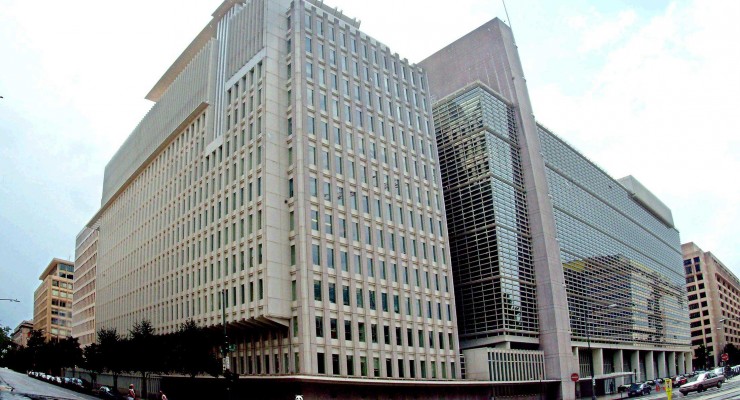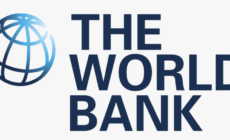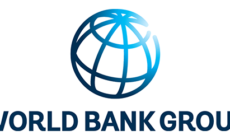Full details of World Bank’s $156 million ‘sanitary pad’ loan facility
- Posted on
- Comment
 The World Bank has released the full details of the loan $156 million loan facility it is granting to the government of Ghana to develop the nation’s educational sector with emphasis on secondary education.
The World Bank has released the full details of the loan $156 million loan facility it is granting to the government of Ghana to develop the nation’s educational sector with emphasis on secondary education.
Parliament on Wednesday approved the loan for the commencement of work to begin.
Below are the full details of the agreement
INTERNATIONAL DEVELOPMENT ASSOCIATION PROJECT APPRAISAL DOCUMENT ON A CREDIT IN THE AMOUNT OF SDR1O1 MILLION (US$156 MILLION EQUIVALENT) TO THE REPUBLIC OF GHANA FOR A SECONDARY EDUCATION IMPROVEMENT PROJECT April 24, 2014
PROJECT DESCRIPTION
A. Project Components
20. The proposed Project would support the Government’s Community Day Senior High School program through two components: (i) Support to Increase Access with Equity and Quality in Senior High Schools; and (ii) Management, Research and Monitoring and Evaluation.
Component 1: Support to Increase Access with Equity and Quality in Senior High Schools (Total costs including contingencies: US$140.1 million)
21. Component 1 uses a results-based financing (RBF) modality. Disbursements up to a capped absolute amount will be made against specific line items in the Education sector annual budget, referred to as eligible expenditure programs (EEPs). These disbursements will be conditioned on achievement of specified results, as measured by disbursement-linked indicators (DLIs). Amatrix of indicators has been developed to measure performance annually and monitor the results achieved (Annex 1).
22. Policies and interventions to be supported are grouped into two pillars: (i) increasing access with equity (geographic, gender, poverty, etc.); and (ii) improving quality of selected low performing SHS.
23. Pillar 1: Increase Access with Equity (Total costs including contingencies: US$125.1 million): The objective of this pillar is to improve access to senior secondary education and improve equity in underserved districts and provide scholarship to students from low income families, especially girls.
24. The SEIP is expected to finance results of the Government’s priority program to expand space through the construction of new senior secondary schools in underserved areas, rehabilitation and expansion of existing low performing schools and through support for SHS attainment of disadvantaged students. The Government plans include new construction in the 14 districts where there are no current operating public SHS. In addition, using the agreed selection criteria for eligible student population compared with available school capacity (effective demand) combined with district level poverty indicators, an additional 9 districts have been identified for new construction.
The ultimate objective is to create new spaces for those demanding seats in SHS and to fill these spaces with new students coming from previously underserved communities. In addition to new schools, this pillar would focus on improving existing SHS, particularly those with capacity for expansion, demand for SHS places, poor learning outcomes, drawing on a needs assessment which will determine level of deficiency (bathrooms, science labs, computer facilities, etc.) and scope for upgrading. Approximately 125 existing schools would be supported. This pillar will improve the Government’s targeting of resources to support increased access by further supporting scholarships to students from low income families, especially girls.
25. Given the operation’s focus on under-served areas and promoting access with equity, disbursement will be linked to indicators (DLIs) that measure increases in seat availability in targeted locations for new construction and increased utilization in existing low-performing schools where new seats are made available. Targeting resources for students from low income families, especially girls in underserved communities would further strengthen equity reforms. Therefore, the release of International Development Association (IDA) credit funds will be linked to achievement of the following DLIs: (i) selection based on targeting of school expansion in underserved districts (DLIl); (ii) increase in new seats utilized for SHS students in underserved districts (DLI 2); (iii) increase in utilized seats in existing selected low-performing schools (DLI3); and (iv) increased enrolment in selected SHS for students from low-income families, especially girls (DLI4).
26. Pillar 2: Improve the quality of education in selected low-performing Senior High Schools (Total costs including contingencies: US$15 million): The objective of this pillar is to improve the quality of SHS, with a focus on mathematics and science education in selected low performing schools”. The SEIP would also strengthen school management, leadership and expansion of ICT in the 125 selected low-performing schools. In order to improve quality, the Project will support the Government’s program to: (i) strengthen school management, leadership and accountability; (ii) target interventions to improve the quality of science and mathematics education; and (iii) introduce School Performance Partnerships (SPPs) based on School Performance Partnership Plans (SPPPs) to capture quality improvements.
The SPPs would develop mutual accountability between school management and the District Education Oversight Committee (DEOC) to improve learning performance with the commitment from government agencies to provide the necessary resources and the responsibility of schools to implement quality improvement activities with verifiable outcomes. In addition to school-based quality inputs, training and financing, this pillar will support the systematic collection and publication of school data for stakeholders to make informed decisions about SHS selection, and forMOE/GES to make informed decisions about planning and financing SHS.
27. The focus on mathematics and science subjects is aligned with the Government strategy to encourage these program areas throughout all education levels. The expansion of ICT wireless connectivity would also allow strengthened science, mathematics and other subject education through digital content for teachers and students. Schools will have access to an education portal1 2 (i-campus) where teachers and students can utilize multiple online resources that are expected to support improved teaching and learning. ICT will be used for intensive in-service support to teachers to improve content knowledge as well as lesson plan preparation, teaching and learning aids, and videos on good teaching practices and classroom management. The portal could also serve as a platform for knowledge exchange with national and international networks and for participation in relevant discussion forums. The SEIP is expected to provide connectivity to 125SHS.
28. As an intermediate result, completion rates in the targeted schools would be expected to increase. A longer term impact would be an increase in student achievement in learning outcomes (as measured by performance in the WASSCE) which is also a year 4 DLR. For this pillar, release of IDA credit funds would be linked to the achievement of the following DLIs: (i) annual publication of School Performance Report (DLI 5); (ii) School Performance Partnerships (SPPs) in 125 beneficiary schools (DLI 6); and (iii) improved learning outcomes in targeted selected schools (DLI 7).
29. Component 2: Management, Research and Monitoring and Evaluation (Total costs including contingencies: US$15.9 million): This component aims to strengthen the implementation capacity of the MOE and GES and its related implementing agencies and assist them to achieve the objectives of the Government’s SHS strategy. This component will support monitoring and evaluation (M&E), coordination, planning, communication, financial management, procurement, and safeguards. In addition it will support an active and evolving research agenda to continue to inform government SHS policy, particularly with regard to financing, social targeting, quality initiatives, teacher rationalization, and curriculum relevance. This component would complement implementation of the program pillars with ongoing analyses, strengthening data collection for school mapping, and establish priorities for new construction, renovations and maintenance.
The establishment of a web platform for school reporting and real time monitoring of all SHS implementation activities would enhance and strengthen the Education Management Information System(EMIS) and school mapping in order to help government report on achievement of results. In addition, funding will be provided to support the independent verification of disbursement linked indicators and results. Support would also be provided to help the MOE to design and realize policy reforms, including piloting and evaluating innovative approaches. This component would finance training, recruitment of short and long-term technical experts, procurement of goods needed for specific activities, and incremental operating cost.
Source: World Bank










 (Selorm) |
(Selorm) |  (Nana Kwesi)
(Nana Kwesi)